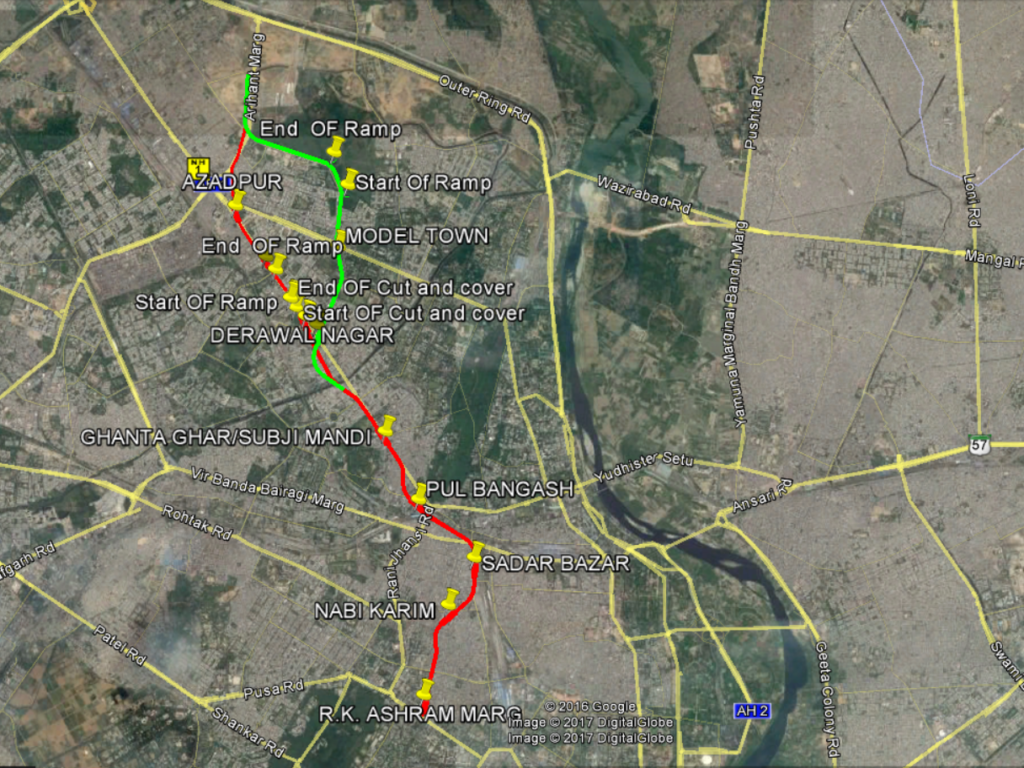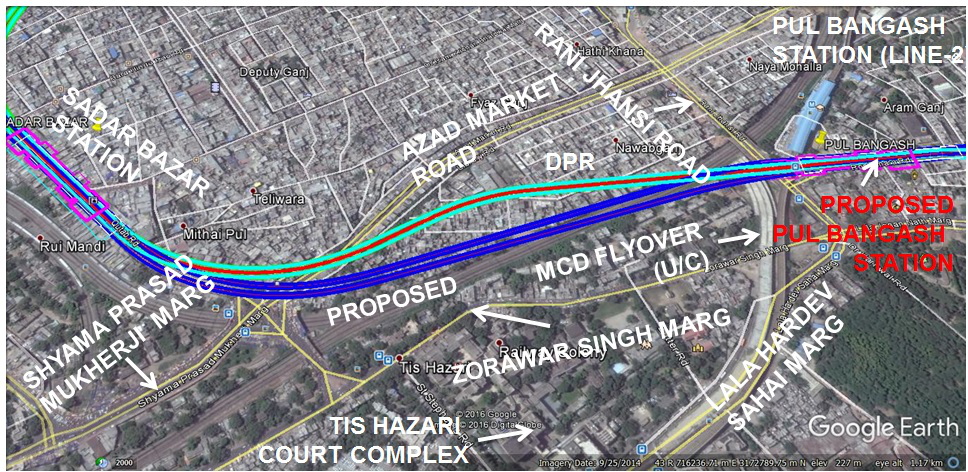
Bentley’s Rail Design Application Helped Complete the 3D Alignment Design in Less Than Three Months
Expanding the Metro System in a Densely Populated Area
The Delhi Metro Rail Corporation is working on its Phase IV expansion to improve rail connectivity between India’s capital of Delhi and the further regions of the National Capital Region. The project includes constructing a new 104-kilometer metro railway line that connects the Majlis Park metro station to the current RK Ashram Marg metro station. Currently in the design stage, the project team expects to complete the Phase IV expansion project by the end of 2022.
Established in 1995, the Delhi Metro Rail Corporation now has 266 trains with four, six, and eight coaches.
More than 100 six-coach trains and 60 eight-coach trains are currently operational.
Delhi Metro Rail Corporation was responsible for reviewing the detailed project report and proposing changes in the alignment design for the railway track section between RK Ashram and Majlis Park metro stations based on current requirements. The new rail corridor includes nine interchange stations, six of which are underground while the other three are elevated.
This project faced many design challenges, as the city of Delhi is a densely populated area, and the railway line passes through areas of mixed traffic. As of 2016, the population in the metro area was over 27.9 million people.
The region’s heavy congestion results in minimal land availability and Delhi Metro Rail Corporation needed to propose alternative design options in the construction of the railway to circumvent congested areas. Additionally, the team needed to maintain safe offset distances from historical monuments in an effort to prevent their deterioration.
Finalizing Designs Faster :
The Delhi Metro Rail Corporation project team prepared the alignment, integrating Google Maps through OpenRail Designer (formerly Bentley’s Power Rail Track) to help team members better visualize the design.
This capability elevated design accuracy by providing a more comprehensive visualization, which resulted in increased efficiency and saved time in finalizing the proposed alignment.
Designing the alignment at stations also posed challenges, especially with regards to maintaining the proper horizontal and vertical distances. The team could modify the alignment easily with OpenRail Designer.
Revisions made to the proposed alignment design included shifting and lengthening stations and tunnels, changing track alignment, deepening stations to fit clearance levels, and rotating tracks to avoid densely populated residential areas, station boxes, and multi-story buildings.
The team also identified numerous changes to the initial track alignment and optimized the design to minimize property acquisition. Additionally, the proposed design maintained safe offset distances from protected monuments while minimizing property acquisition at the station location.

OpenRail Designer saved Delhi Metro Rail Corporation time and money
by enabling the project team to swiftly alter and finalize designs
As a result, the railway will integrate into densely populated areas while preserving the city’s cultural heritage. Using the geographic capabilities in OpenRail Designer reduced the cost of the project and the resource hours, allowing the project to be delivered on time.
Continuing a Commitment :
The project team used OpenRail Designer to complete the 3D alignment design in less than three months. The application’s capabilities made it easier to quickly make necessary changes. Visualizing the final product and sharing the design with all participants was simple when utilizing Bentley’s 3D capabilities.
With this quick turnaround, the team reduced resource hours and project costs.This project continues Delhi Metro Rail Corporation’s continual efforts to help the local population travel easier and safer, while also reducing their environmental impact. The system is the first railway project in the world to claim carbon credits for regenerative braking.
It has also been certified by the United Nations as the first metro rail and rail-based system in the world to get carbon credits for reducing greenhouse gas emissions. The Delhi Metro rail system has helped to reduce pollution levels in the city of New Delhi by 630,000 metric tons every year, thus diminishing global climate change. Many stations have roof-top solar power plants and the metro system has helped remove about 700,000 vehicles off the streets. The Phase IV expansion will make it possible for the organization to continue improving or sustaining a good quality of life for the populations relying on this piece of infrastructure.
Project Summary :
Organization :
Delhi Metro Rail Corporation
Solution :
Rail and Transit
Location :
New Delhi, Delhi, India
Project Objectives :
• Design railway track alignment for the proposed metro railway line connecting Majlis Park metro station to RK Ashram metro station in New Delhi.
• Create a design that considers the dense population of the region, addressing their transportation needs and determining alternative solutions to deal with land scarcity.
Products Used :
OpenRail Designer (formerly Power Rail Track)
Fast Facts :
• The Delhi Metro Rail Corporation project team reviewed the detailed project report and proposed changes in the alignment design.
• Team members better visualized the design to prepare the alignment by integrating Google Maps through Bentley software.
ROI :

OpenRail Designer saved Delhi Metro Rail Corporation time and money
by enabling the project team to swiftly alter and finalize designs
• Designs were easily modified and finalized faster with OpenRail Designer, reducing resource hours and project costs on the 3D alignment design.
• The project team completed the alignment design of the railway line in under three months.
• The 3D capabilities of OpenRail Designer allowed the team to easily visualize the final proposal and share it with all participants
Author:
 Mr. Steve Cockerell, Director Industry Marketing – Road and Rail, Bentley Systems
Mr. Steve Cockerell, Director Industry Marketing – Road and Rail, Bentley Systems
Mr. Steve Cockerell joined Bentley Systems in 2002 and works as part of a team delivering knowledge and expertise to its users across the transportation industry. In his role, Cockerell leverages his 25 years of industry experience in helping develop and maintain Bentley’s position as the leading supplier of software and services to the world’s infrastructure community. Cockerell began by studying civil engineering, before working as a highway designer for local government in the U.K. Joining MOSS Systems in 1990 as an application engineer he focused on communicating the benefits delivered by CAD-based design
applications for highways, rail and land development projects.

